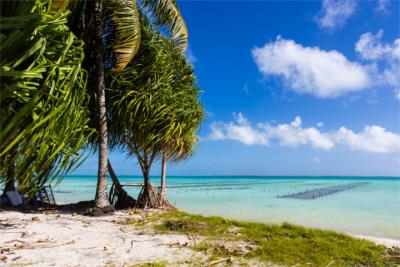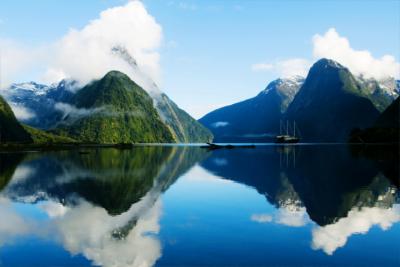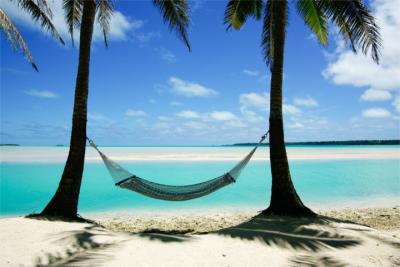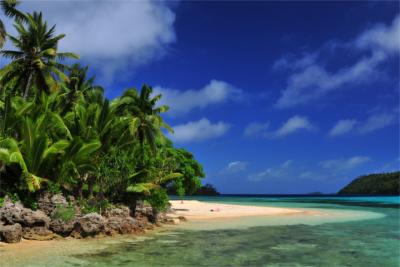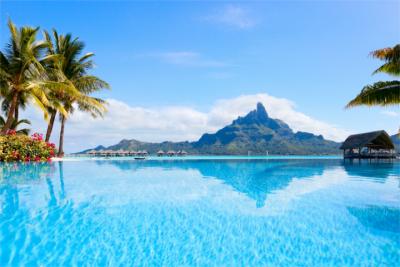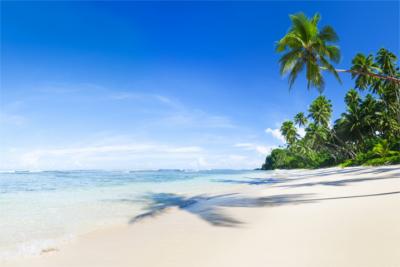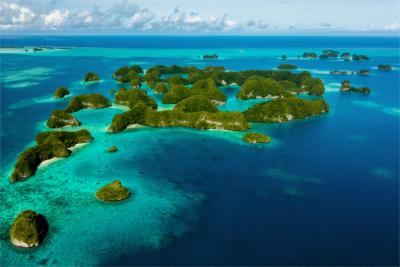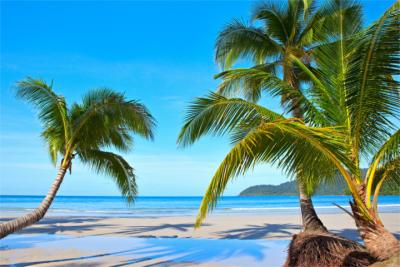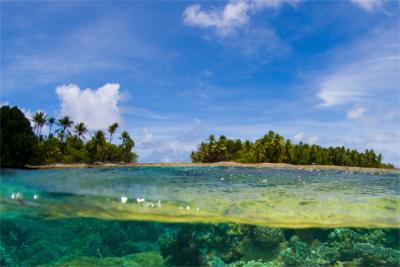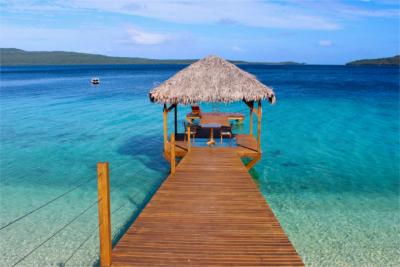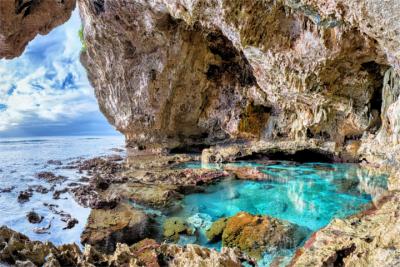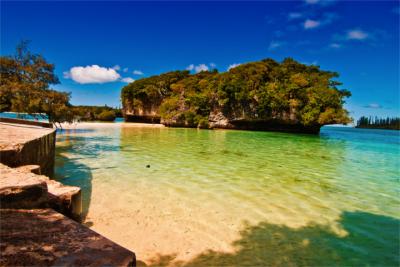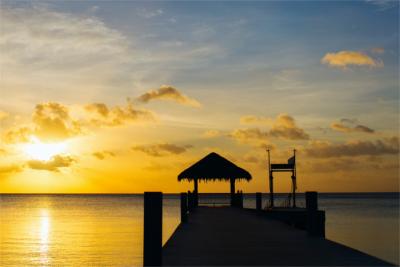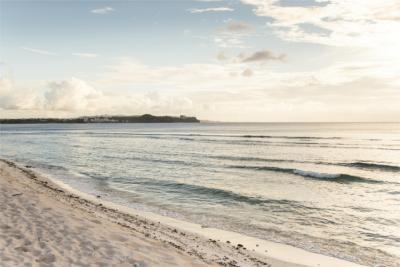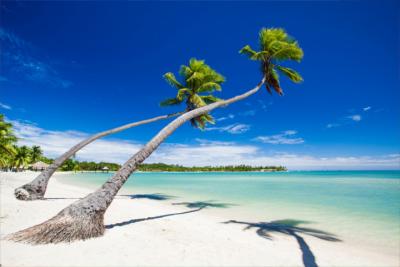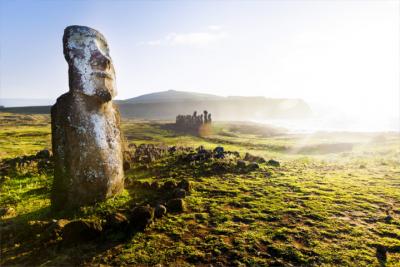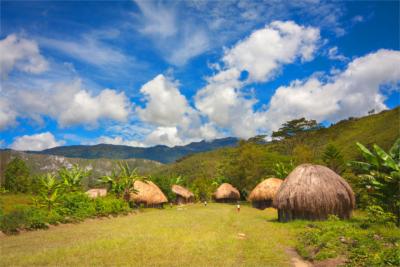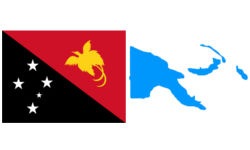Travel Offers
Travelmyne Featureprint
Distance
Papua New Guinea - The Mysterious Tropical Island in the Pacific
The country on the second biggest island on earth is a jungle paradise with wild animals, exotic plants and a native tribal culture. Time seems to stand still here and travellers can relax at the natural beaches of the idyllic island world.
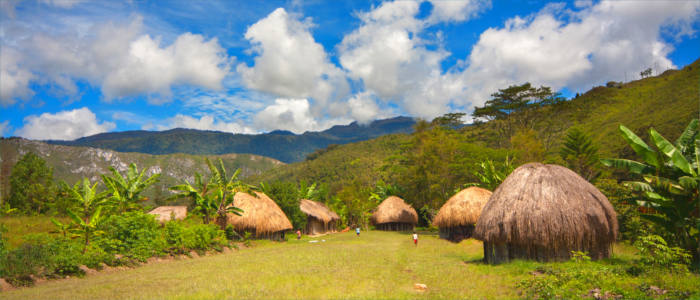
Geography - An island country in the Pacific Ocean
Papua New Guinea is located on the second biggest island on earth. However, it only constitutes the eastern part of the island. In the west, it borders on Indonesia. Besides the main island, there are 600 smaller ones, which all lie in the Pacific Ocean and are about 160 kilometres away from Australia. The country is divided into 20 provinces in addition to the capital district of Port Moresby and the autonomous region of Bougainville. Other big cities are Lae and Arawa. The best-known islands are New Britain, New Ireland, the northern Salomon Island and the Louisiade Archipelago. The climate is tropical. It is hot and very humid throughout the year with an average yearly temperature of 26 °C.

Nature - An undetected paradise
Echidnas, tree-kangaroos, birds-of-paradise, giant butterflies and over 2,000 orchid species - Papua New Guinea is a natural paradise and largely undeveloped. More than three quarters of the country's area are forested. Rainforests, cloud and mountain forests as well as palm, swamp and mangrove forests dominate the scenery. In addition, there are dry savannas, which are vegetated by acacias and eucalyptus, and a vast volcanic landscape. Some volcanoes are active to the present day and several craters are over 2,500 metres high. In general, the country is very mountainous. The highest peak is Mount Wilhelm, which reaches a height of about 4,500 metres. Most surrounding islands are of volcanic origin as well. The most beautiful natural sights, however, are the untouched beaches and colourful coral reefs in front of the coast.
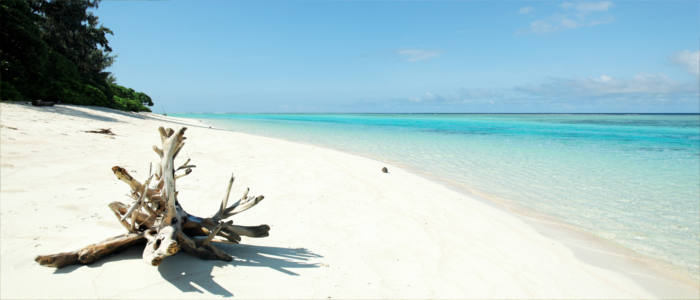
Natural sights - The secrets of the jungle
Papua New Guinea is an authentic natural paradise, which has only been seen by a few visitors and adventurers so far. The tourism industry has hardly been developed, which is why the most impressive natural attractions can only be reached with the help of a professional guide. If you go to the trouble, you will be rewarded with incredible sights, for example in the Variara National Park, in the botanical garden in Lae, on the butterfly farm in Kerei or on the remote island of New Ireland. Real adventurers take part in a cave expedition in Bougainville or go on a trip to the volcano of Mount Balbi. With a bit of luck, they find Admiral Yamamoto's crashed plane from World War II on their tours through the thicket of the jungle. Travellers who want to get to know the native tribes travel with the dugout, a wooden boat which is made of one tree trunk, down the Sepik River. This way, they also see the country's typical hut architecture.

Culture - Steady tribal culture
Several powers laid claim to Papua New Guinea in the course of history. From the 17th to the 19th century, the Dutch and the British competed for supremacy. A part of the country belonged to the German colonial empire and was called "Kaiser-Wilhelmsland". A form of German, the Unserdeutsch language (Rabaule Creole German), is still spoken in a number of areas but after World War I, the region became part of the United Kingdom again. The country only gained independence in 1975 but this hardly affected the numerous tribes. They lived like they did 1,000 years ago, no matter which power ruled the country and do this to the present day. It is said that there are about 860 tribes in Papua New Guinea and at least as many languages. The official language of English is normally understood in the towns but visitors cannot expect to be able to communicate in English in the rural areas.
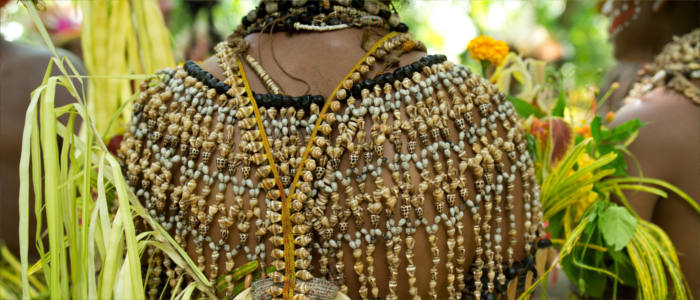
Cultural sights - The war dances of the the native tribes
Travellers who want to marvel at Papua New Guinea's traditional art should visit the National Museum in Port Moresby. The stilt houses in Hanubada Village, the holy spirit houses in Tambarans or the copper mine in Bougainville are even more authentic. Many visitors get an overview of the country's culture when they visit the many fishing villages near the coast. In the inland, tourists can attend traditional war dances performed by native tribes. The UNESCO declared the Kuk Early Agricultural Site a World Cultural Heritage site.

Experience - Asian cuisine and island magic
Manioc, plantains and a lot of fish - Papua New Guinea's cuisine makes use of what nature provides. In addition, there are Asian influences. Fish and fresh vegetables are served mildly seasoned and gently cooked. One speciality are dishes from the earth oven. If you are looking for an authentic souvenir, you can choose between artistic wooden objects, pottery and bags made of wool and natural fibres. You only find shopping facilities in bigger cities like Port Moresby and Lae. Nightlife also takes place in the tourist coastal towns and in the capital. It is worth pointing out that holidaymakers should not walk around on their own after dark. Security is still a big problem in the whole of the country. A considerably more relaxed experience is a crossing by cruiser or boat to the country's wonderful island world.

Activities - Enjoying nature
Papua New Guinea has only just started to promote tourism. Therefore, travellers cannot expect a great variety of leisure facilities. Nevertheless, the diverse landscape offers a number of possibilities. The beaches are untouched, deserted and very clean. More and more divers discover the islands and visitors can go on guided hikes both in the highland and in the tropical rainforest.
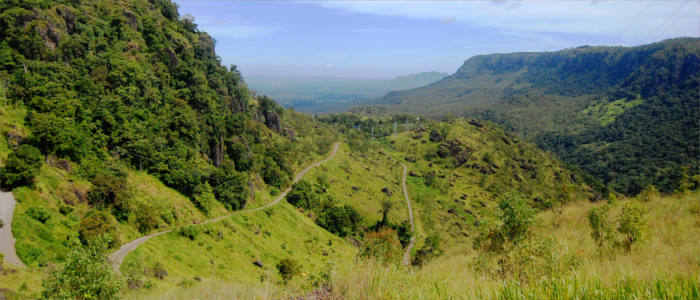
Information
Papua New Guinea is not a classic tourist destination and hardly developed yet. Travellers who want to visit this tropical region should do this from June to September when precipitation is lower. As Malaria is widespread in the area, holidaymakers should inform themselves on necessary protection against the disease beforehand. The official currency is the kina but shell money is also common in some regions.
The deep jungle and the variety of different landforms in Papua New Guinea are ideal for travellers who are looking for an adventure in the wild.

